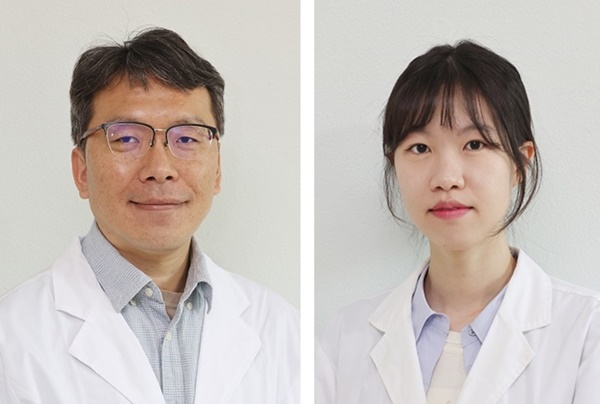Novel Biotherapeutics for the Treatment of Cancer
Article Mar 16, 2018 | by Joanna Owens, PhD, Freelance Writer and Editor, UK
 |
T-cells and cancer cell
Were in an exciting new era of cancer treatment – where biological molecules are allowing us to target tumors and the surrounding host biology in an unprecedented way. We take a look at some emerging new treatment options – from localized tumor vaccines that prevent metastasis, to exploiting viruses that tackle brain tumors.
1. The rise of immunotherapy
Whenthinkingaboutthenovelcancertreatmentscomingthroughthepipelinetoday,it sclearthatmostexcitementcentresaroundimmunotherapy.Scientistshavebeenlookingatwaystoharnesstheinnateimmunesystemagainstcancerfordecades.Butitwasadiscoveryinthemid-1990sthatunlockedthekeytothedramaticresponsesbeingseenwithimmunotherapyintheclinictoday.Dr James Allison of MD Anderson Cancer Center identified CTLA-4 as an inhibitory checkpoint molecule,1whichrestrictedactivatedT-cellresponses.DrAllisonproposedthatblockingCTLA-4wouldboostT-cellresponsesagainstcancer,essentiallytakingthebrakeofftheimmunesystem,whichitdid.
Sincethisseminaldiscovery,therehasbeenasteadystreamofdrugsinclinicaldevelopmentthatblockcheckpointmoleculessuchasCTLA-4,PD-1andPD-L1.Infact,overall,sinceSeptember2017,26newimmunotherapieshavebeenapproved,and17typesofcancernowhaveatleastoneapprovedimmunotherapyavailableasatreatmentoption.2 As a result, there is renewed optimism about the potential of immunotherapy to provide long-lasting control of even the most advanced cancers. However, these dramatic responses are only seen in a small proportion of patients, so new approaches building on their success are still needed.
2. Off-the-shelf immunotherapies
Therearetwomainstrategiesbeingpursuedasimmunotherapies:targetingtumor-specificantigensuniquetoanindividual’scancerordeveloping‘off-the-shelf’approachesthatworktoenhancetheimmunesystemtofightanytypeofcancer.Professor Ronald Levy of Stanford University is developing the latter – a combination vaccine that has shown dramatic results in mice.3
“I dheardaboutacompoundcalledCpG,aligandfortheToll9receptorondendriticcells,residentwithintumors.ItwasapieceofDNA,whichcouldbeinjecteddirectlyintotumorsandaccomplishconsiderablestimulationoftheimmuneresponse.We’dworkedwiththiscompoundforawhileanddoneclinicaltrialswithit,butwewantedtoaugmentthateffect.”
Levyusedanin vivo screening strategy in mice for molecules and antibodies that could synergistically combine with CpG. Levy’s team implanted the same tumor into two different sites in the mouse, and injected CpG into one of the tumors, before also injecting a whole list of candidate immune enhancers.
Theyfoundonereallyeffectiveaugmenter–anantibodyagainstaT-celltargetcalledOX40.WheninjectedintothetumorwithCpG,thecombinationtriggeredasystemicT-cellimmuneresponseandeliminatedtumorsthroughoutthebody.ThiscameassomethingasasurprisetoLevy:“MostoftheworldisenchantedbyatargetcalledPD-1.WethoughtthatPD-1wouldbethelogicalenhancerhere,andinfactitturnedouttohaveaweakeffectcomparedtotheantibodyagainstOX40.So,we’realittlecountertothemainstreamherewithourtarget,whichwe’reintriguedby.”
Theyextendedthestudytoamousemodelthatgetsbreastcancersspontaneouslydrivenbyanoncogene.“Wewereabletomonitortheseanimalsforthefirstarisingtumorsinoneoftheirbreastareas,injectthesetwomoleculesintothefirsttumorthatappears,andthenobservetheanimalstoseewhathappens.”
Incredibly,immunizationin situ in that first tumor prevented the occurrence of subsequent naturally occurring independent tumors in the animal’s other mammary glands. It also prevented metastases from occurring and stopped the mice from dying of the naturally occurring tumors.
“Naturallyarisingtumorsareaverytoughtarget–especiallywhendrivenbyastronggene.Theinnateresponseweinducedthiswayoutracedthestrongdrivingforceoftheoncogene,”Levyexplains.Thiscombinationofstimuligivenlocallyinonetumorcouldbeveryeffective,andaclinicaltrialinlow-gradelymphomaisnowbeingplannedtoextendtheapproachtopeople.
Oneoftheadvantages,Levysays,isthatthevaccineisoff-the-shelf.“Wearenotneedingtomakeanythingcustomforeachperson.Thisisreadytogo.Wedonotneedtodiscovertheimmunetargetsonatumor.Wearejusttryingtotalktotheimmunesystemtoproperlyactivateit,andletitchooseitsowntargets.”
3. Advances in cell therapy
Attheotherendofthescaleischimericantibodyreceptor(CAR)T-celltherapy,whichinvolvestakingimmunecellsfromapatientandgeneticallyengineeringthemtorecognizeandrespondtotheircancercells.ThefirstCART-celltherapyapproachhasjustbeenapprovedtotreatanoften-lethaltypeofbloodandbonemarrowcanceraffectingchildrenandyoungadultsandisheralded by the FDA as ‘the first gene therapy in the US’.
Professor John Maher, at Kings College London, first developed the signaling portion (the endodomain) of the CAR when working in Professor Michel Sadelain’s lab, about 17 years ago. Now he’s leading an early-phase trial of CAR T-cell therapy for head and neck cancer – one of the first to test the approach in solid tumors.
TheCARbeingtestedisuniqueinitsabilitytorecognizeeightdifferentbindingcombinationsoftheErbBfamilyofreceptors.Thiswasinspired,Mahersays,bythesuccessofmonoclonalantibodycancerdrugs.
“It’saslightlyunusualchoicebecauseweknowthatthistargetisnotnecessarilyasafetarget,butIwasheavilyinfluencedbythesuccessofmonoclonalantibodiestargetingthatnetwork–drugslikecetuximab,andHerceptin®(trastuzumab)etc–whichareallblockbusterdrugsinthesolidtumorarena.Mythinkingwasthatthisisavalidatedtargetfromthepointofviewofamonoclonalantibody.Let’smakesomethingevenmorepotentintheformofaCART-cellandthinkcarefullyabouthowwecandeliverthecellstominimizetheriskofon-targettoxicity.”
Inadditiontoitsuniquetarget,aninnovativeexpansionprocesshasbeendevelopedtogeneratethecellsquickly.“OurCART-cellshavebeenengineeredtohaveheightenedresponsivenesstothecytokine,interleukin-4(IL-4),”explainsMaher.“Thisisanadvantagebecauseifthereispoorefficiencyofgenetransferduringtheengineeringstep,theIL-4willenrichforthesuccessfullyengineeredCART-cellsduringthemanufacturingprocess.”ThisallowsthemtostartwithaverysmallnumberofcellsandgenerateseveralbillionCART-cellswithintwo-weeksofinitiallyharvestingthemfrompatients.
“IntheearlydaysbeforethesuccessofCART-cellsinB-cellmalignancy,Ithinkpeopleviewedthisverymuchasaboutiqueactivity–thatscientistswereplayingwithtesttubesinalabanditwouldneverbeapracticaltreatmentforpatients.ThatlandscapeischangingnowIthink.”
Analternativetotakingthepatients’existingmatureimmunecells,istotrainpeople’sstemcellsbeforetheybecomepartoftheimmunesystem.AstudybyProfessor Joseph Wu, of Stanford University School of Medicine, recently showed that induced pluripotent stem cells, a mainstay of regenerative medicine, could be used to train the immune system to attack or even prevent tumors.4
"Whenweimmunizedananimalwithgeneticallymatchinginducedpluripotentstem(iPS)cells,theimmunesystemcouldbeprimedtorejectthedevelopmentoftumorsinthefuture,”saidWu.TheresultssuggestitmayonedaybepossibletovaccinateanindividualwithhisorherowniPScellstoprotectagainstthedevelopmentofmanytypesofcancer.
4. Using viruses to treat cancer
Althoughimmunotherapymayhavethemonopolyoncancerbiotherapeutics,researchersarelookingatwaystopotentiateitseffect–andoneofthekeycontendersisviruses.
Virusesarealreadybeingstudiedassoleagentsfortreatingcancer– forexample,Dr Harry Bulstrode at Cambridge University is investigating whether the Zika virus could be used to treat brain tumors. Zika, unlike other viruses, is able to transverse the blood-brain barrier without damaging normal brain tissue and this means it could be used to target the cancer stem cells in the brain that drive glioblastoma.
Buttwonewstudieshavetakentheoncolyticpropertiesofsomevirusesandtestedwhethertheycanprimetheimmuneresponsereadyfortheuseofcheckpointinhibitors.
Inonestudy,researchersinjectedtherhabdovirusintotumorsinamousemodeloftriple-negativebreastcancer(TNBC)5 before they were surgically removed. They found that addition of the virus sensitized otherwise refractory TNBC to immune checkpoint blockade, preventing relapse in most of the treated animals.
Inanearly-phasetrial6 involving nine patients with recurrent high-grade gliomas or brain metastases, intravenous infusion of oncolytic human reovirus leads to infection of tumor cells subsequently resected as part of standard clinical care. This proved that the virus can increase the cytotoxic T-cell tumor infiltration relative to patients not treated with virus, and could potentially boost the immune response when combined with checkpoint inhibitors.
Immunotherapiesmightbestealingtheshowincancerbiotherapeutics,butitwouldseemthatcombiningthemwithotherbiologicalagents–DNAorviruses,forexample–isthewaytoseeingdramaticsuccessesinmorecancerpatients.
Reference:
https://www.technologynetworks.com/biopharma/articles/novel-biotherapeutics-for-the-treatment-of-cancer-298667?utm_campaign=Newsletter
노벨사이언스 science@nobelscience.co.kr
<저작권자 © 노벨사이언스, 무단 전재 및 재배포 금지>



 간단한 공정으로 이산화탄소 분리 성공
간단한 공정으로 이산화탄소 분리 성공








